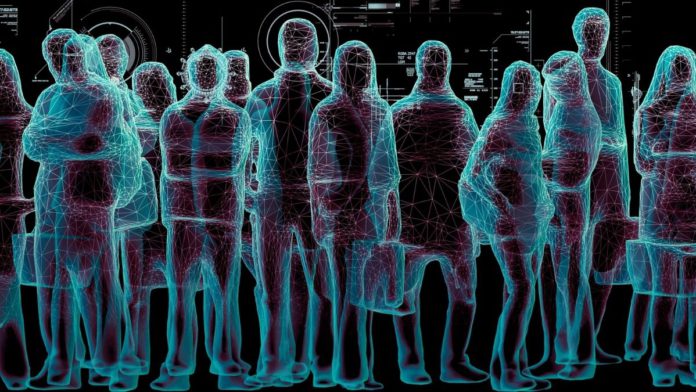With the proliferation of the Internet of Things and social networking channels, the world is generating a massive flow of data for commercial and scientific use. We frequently hear how artificial intelligence (AI) has advanced with the introduction of massive datasets enabled by the emergence of social media and our growing reliance on digital solutions in everyday life. While privacy regulations restrict the use of user data, a more pressing concern is that customer behavior is rapidly changing, and historical data risks becoming obsolete by the time it is gleaned, processed, and prepared for AI training. Further, the presence of bias in an AI algorithm can make it ineffective.
While training an artificial intelligence model, developers feed the input data and the expected outcomes to the model — based on this, the model can configure its own rules to make the most out of the given information. Hence the adage: AI is as good as the data it trains on. So, to push technological development, we need more data. The more data a model can train on, the better the model will perform.
It is imperative that the models are trained on the qualitative dataset as well. However, with new privacy regimes like the GDPR in Europe and the CCPA in California, accessing real-time quality data is not always possible. Fortunately, there is a catch. According to GDPR, data protection rules apply to all information relating to a natural person who may be identified or identifiable. The data protection rules do not extend to anonymous information — information that does not relate to an identified or identifiable natural person, or to personal data that has been rendered anonymous in such a way that the individual is no longer identifiable.
This led to the rise of leveraging synthetic data or data that is synthesized with an emphasis on privacy. Synthetic data is based on the assumption that the synthesized data is mathematically and statistically equivalent to the real-world dataset it is replacing. This enables data analysts to derive the same mathematical and statistical conclusions from the examination of a synthetic dataset as they would from the analysis of actual data. According to Gartner, by 2024, 60% of the data employed in the development of AI and analytics projects would be synthetically generated.
It might be excessively expensive and tedious to collect real-world data with required features and variety. After data collection, annotating data points with the right labels is a must as mislabeled data might lead to incorrect model results. These procedures can take months and require a significant amount of time and money. Moreover, if there is a need to gather data about a rarely occurring event, it is possible that the final data may contain non-uniform data points that may not help in making an informed decision.
Synthetic data does not require manual data capture and can have almost flawless annotations because it is generated programmatically. This data is automatically categorized and can contain unusual but critical corner instances, allowing for better prediction of rare events. For instance, getting data to train an autonomous vehicle to maneuver in roads filled with potholes may not be possible. This is when manufacturers can use synthetic data to test the efficiency of the vehicles by introducing desired test conditions.
At present there are two widely used methods to obtain synthetic data:
- Variational Autoencoder: It’s an autoencoder whose encodings are regularised during training to ensure that its latent space has excellent characteristics and can create fresh data. Here the original data set is compressed and sent to the decoder, which then produces an output that is identical to the original data set. The system is set up to maximize data correlation between input and output by minimizing the reconstruction error between the encoded-decoded data and the initial data.
- Generative Adversarial Network: GANS comprises two neural network models — a generator and a discriminator — that make up the system. The Generator is trained to create plausible false data from a random source, while the Discriminator is trained to tell the difference between the Generator’s simulated data and actual data. The process goes on until the discriminator function can’t tell the difference between natural and synthetic data any more.
Other methods for generating synthetic data are Wasserstein GAN, Wasserstein Conditional GAN, and Synthetic Minority Oversampling (SMOTE).
The main advantage of generating synthetic data is nullifying the risks of privacy violations. While it is more difficult to extract sensitive information from training sets and parameters than from plain input/output, there is clear evidence from studies that reverse-engineering models and recreating data are possible. Since a synthetic dataset does not contain information about real people while retaining the key properties of a real dataset, it advances the cause of privacy in artificial intelligence models. Amid the alarming news of data leaks happening now and the fallout of traditional data anonymization tools, synthetic data is a better solution. The anonymity of the synthetic data allows organizations to comply with privacy rules and avoid being penalized for non-compliance. Synthetic data enables rapid prototyping, development, and testing of sophisticated computer vision systems without jeopardizing human identification.
Read More: Digital Immortality or Zombie AI: Concerns of Using AI to Bring Back the Dead
The excitement revolving around the use of data has been hampered by outrage about data privacy. Having similar statistical fidelity as real data analysis, synthetic data promises to address not only privacy but also data unavailability, data restrictions and AI bias concerns. When producing synthetic data, it’s crucial to take a step back and look at the entire dataset to determine what changes could be needed to improve the model’s ability to predict the expected results. Despite the fact that research is still in its infancy, several innovative solutions have emerged with an integrated focus on academics and industry, which go a long way in ushering a new shift from real data to synthetic data in this decade.


